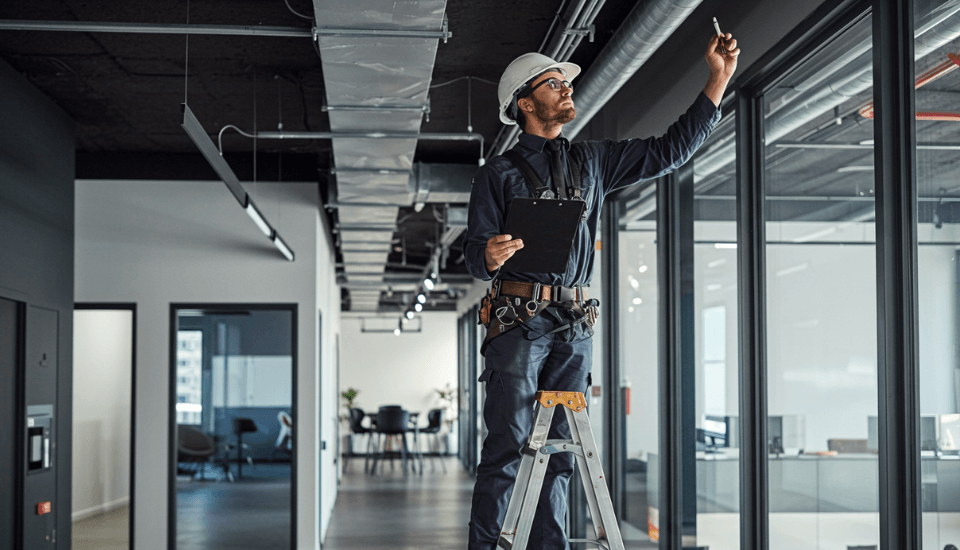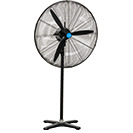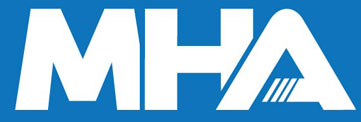How Often Should Workplace Safety Inspections Occur?
Date Posted:12 August 2025
Regular workplace safety inspections are vital for preventing incidents, avoiding fines, and meeting workplace health and safety laws. Find out how often your business should conduct them.
Verdex Insights: At a Glance
-
The Challenge: Many workplaces overlook consistent safety inspections, assuming that occasional checks are enough. Without routine monitoring, hazards go unnoticed, compliance lapses occur, and the likelihood of workplace injuries or penalties increases.
-
The Insight: Regular inspections identify risks before they cause harm, strengthen WHS compliance, and promote a culture of accountability. The right inspection schedule depends on risk level, industry, and workplace changes, ensuring safety systems stay effective and current.
-
The Verdex Solution: Verdex supports construction, warehousing, logistics, and manufacturing businesses with WHS-compliant safety equipment, PPE, and signage that reinforce inspection outcomes. Our products help organisations maintain compliance, reduce risk, and create safer, more efficient workplaces.
Why Workplace Safety Inspections Are Important
Regular workplace safety inspections are essential for identifying hazards, preventing incidents, and maintaining compliance with Australian WHS laws. They’re also a key part of fostering a positive safety culture across your team. Inspections not only protect your workers, they also protect your business from costly fines, legal liability, and operational downtime.
At Verdex, we believe the frequency of safety inspections depends on a range of factors including your industry’s risk level, the type of work conducted, and specific regulations that apply to your location or sector. Whether you’re managing a construction site or a quiet office, inspections must be tailored and timely.
What Is a Workplace Safety Inspection?
A workplace safety inspection is a systematic review of a work area to identify and correct health and safety risks before they lead to harm. The purpose is to detect hazards, ensure compliance with WHS regulations, and implement corrective actions.
There are different types of inspections:
-
Formal inspections involve detailed checklists and documented outcomes.
-
Informal walk-throughs are quick, visual reviews done during regular duties.
-
Audits are more comprehensive, typically conducted by internal or external experts to assess overall compliance.
Typically, safety inspections are carried out by supervisors, WHS representatives, health and safety officers, or site managers. In some industries, third-party audits may also be legally required.

How Often Should Safety Inspections Be Carried Out?
General Workplace Guidance - MONTHLY
For most moderate-risk workplaces (such as warehouses, workshops, or logistics operations), safety inspections should be conducted at least monthly. This frequency helps identify evolving hazards and ensures safety controls remain effective.
Larger or busier sites may opt for weekly inspections, especially if multiple shifts are involved. Some businesses also conduct daily visual checks at the start of each workday to catch obvious hazards quickly. The key is consistency—whatever schedule you set, stick to it and document the outcomes.
High-Risk Industries (e.g., Construction, Mining) - DAILY
In high-risk industries like construction, mining, and manufacturing, inspections need to happen much more frequently due to the dangerous nature of the work.
-
Daily pre-start inspections are common and often legally required.
-
Toolbox talks may accompany inspections to remind workers of specific hazards.
-
Critical areas like scaffolding, electrical systems, and heavy machinery often require task-specific checks before every shift.
Failing to inspect regularly in high-risk environments can have devastating consequences—both legally and in terms of worker safety.
Low-Risk Workplaces (e.g., Office Settings) - QUARTERLY OR BIANNUALLY
For low-risk environments like offices or retail stores, quarterly or biannual safety inspections may be acceptable.
Inspections in these settings typically focus on:
-
Ergonomics: desk and chair setups
-
Electrical safety: power boards, cords
-
Trip hazards: loose mats, cables
-
Fire safety: extinguishers, exit signs
However, even in low-risk workplaces, inspections should still be done after any incident, reported hazard, or significant workplace change.
After Certain Events - AS SOON AS POSSIBLE
Inspections should always be conducted after specific triggers, such as:
-
A workplace incident, near miss, or injury
-
A WHS complaint or report from staff
-
A major change in processes, equipment, or layout
-
Hiring a large number of new employees
These inspections help ensure the site remains safe and compliant as conditions evolve. Post-incident inspections are also critical for preventing repeat occurrences and fulfilling your legal obligations.
Legal Requirements (WHS Compliance)
Under Safe Work Australia’s Model Code of Practice, employers have a duty to manage risks and conduct regular inspections. While no specific national schedule is mandated, state-based regulators (like WorkSafe Victoria or SafeWork NSW) may outline stricter requirements based on your industry.
Certain tasks or equipment may require legally scheduled inspections, such as:
-
Scaffolding
-
Fire equipment
-
Electrical testing and tagging
-
Pressure vessels or lifting gear
Failing to meet these inspection requirements can lead to penalties, enforceable undertakings, or even prosecution.
How to Create an Effective Inspection Schedule
Creating a strong inspection routine requires a thoughtful, risk-based approach.
-
Assess your workplace risks: Use a hazard register to identify high-risk areas.
-
Use checklists: Standardised forms help maintain consistency and thoroughness.
-
Involve safety representatives: WHS reps provide valuable input and help with worker engagement.
-
Document everything: Keep records of inspections, findings, and corrective actions.
-
Assign responsibility: Make it clear who conducts inspections and when.
Set calendar reminders or integrate inspections into your digital WHS system to ensure they’re never missed.

What Happens If You Don’t Do Regular Inspections?
Failing to carry out regular safety inspections leaves your workplace vulnerable to:
-
Increased risk of injuries and incidents
-
Fines, penalties, and legal consequences for non-compliance
-
Breach of WHS duties under state and federal legislation
-
Loss of employee trust and poor safety culture
In extreme cases, serious incidents linked to poor safety management can result in criminal charges for businesses or individuals. Inspections are one of the easiest ways to stay on top of safety and reduce risk proactively.
Final Thoughts
Workplace safety inspections are not just a checkbox, they’re a frontline defence against injury, inefficiency, and non-compliance. By understanding your legal obligations and tailoring your inspection schedule to your specific risks, you can create a safer, more efficient, and more compliant work environment.
Review your current inspection practices, engage with your team, and consider professional audits or digital tools to strengthen your approach.
Need help improving the safety of your workplace environments? Explore our workplace safety equipment and supplies, PPE clothing and safety gear and safety information signage solutions to keep your site compliant.
If you’re searching for other material handling equipment solutions in Australia, reach out to our team by:
-
Emailing sales@verdex.com.au
-
Filling out our contact form
Frequently Asked Questions
What is a workplace safety inspection?
It’s a structured review of a work area to identify hazards, assess controls, and improve safety. It can be formal or informal depending on the risk level.
Why are safety inspections important?
They help prevent accidents, meet legal duties, and promote a positive safety culture. Inspections ensure hazards are identified before they cause harm.
Who is responsible for conducting safety inspections?
Safety inspections are usually done by WHS representatives, supervisors, or managers. Some industries may require licensed inspectors for specific equipment.
What’s the difference between an inspection and an audit?
An inspection is a routine review of a specific area or task, while an audit is a broader assessment of your overall WHS systems and compliance.
Should inspections occur after an incident?
Yes. A post-incident inspection helps identify what went wrong, prevent recurrence, and fulfil legal obligations under WHS law.
Is a toolbox talk the same as an inspection?
No. A toolbox talk is a short safety discussion, often done before a shift. It can accompany an inspection but doesn’t replace one.
What are the consequences of not doing regular inspections?
Consequences include workplace injuries, legal penalties, regulatory action, reputational damage, and a decline in worker morale and safety culture.
































































































































 Trolleys & Hand Trucks
Trolleys & Hand Trucks Cage Trolleys
Cage Trolleys Cleaning Carts & Trolleys
Cleaning Carts & Trolleys Construction Trolleys
Construction Trolleys Custom Trolleys
Custom Trolleys Hand Trucks & Dollies
Hand Trucks & Dollies Laundry/Linen Trolleys
Laundry/Linen Trolleys Lifting Trolleys
Lifting Trolleys Order Picking Trolleys
Order Picking Trolleys Panel Cart Trolleys
Panel Cart Trolleys Platform Trolleys
Platform Trolleys Powered Trolleys
Powered Trolleys Shelf & Tiered Trolleys
Shelf & Tiered Trolleys Shopping Trolleys
Shopping Trolleys Stainless Steel Trolleys
Stainless Steel Trolleys Tool Trolleys
Tool Trolleys Utility & Service Carts
Utility & Service Carts Lifting & Handling Equipment
Lifting & Handling Equipment Forklift Attachments
Forklift Attachments Jib Attachments
Jib Attachments Lifting Hoists & Pallet Hooks
Lifting Hoists & Pallet Hooks Load Skates & Tow Tugs
Load Skates & Tow Tugs Manual Stackers & Lifters
Manual Stackers & Lifters Pallet Jacks
Pallet Jacks Pallet Lifters
Pallet Lifters Pallet Rotators & Dispenser
Pallet Rotators & Dispenser Powered Pallet Trucks & Electric Lifters
Powered Pallet Trucks & Electric Lifters Scissor Lift Trolleys and Tables
Scissor Lift Trolleys and Tables Conveyor Equipment
Conveyor Equipment Conveyor Frames & Stands
Conveyor Frames & Stands Roller & Skate Conveyors
Roller & Skate Conveyors Ladders & Access Equipment
Ladders & Access Equipment Container & Yard Ramps
Container & Yard Ramps Ladders & Step Stools
Ladders & Step Stools Work Platforms & Crane Cages
Work Platforms & Crane Cages Drum Handling Equipment
Drum Handling Equipment Drum Storage & Bunding
Drum Storage & Bunding Drum Trolleys & Lifters
Drum Trolleys & Lifters Forklift Drum Handling
Forklift Drum Handling Waste Handling & Bins
Waste Handling & Bins Bin Lifters & Tippers
Bin Lifters & Tippers Plastic Waste & Wheelie Bins
Plastic Waste & Wheelie Bins Steel Waste & Tipping Bins
Steel Waste & Tipping Bins Waste Carts
Waste Carts Dangerous Goods Storage & Spillage
Dangerous Goods Storage & Spillage Aerosol Cans Storage Cages
Aerosol Cans Storage Cages Bunded Pallets & Storage
Bunded Pallets & Storage Corrosive Goods Storage Cabinets
Corrosive Goods Storage Cabinets DG Storage & Trolleys
DG Storage & Trolleys Flammable Liquid Cabinets
Flammable Liquid Cabinets Forklift Gas Storage Cages
Forklift Gas Storage Cages Site Storage
Site Storage Spill Kits
Spill Kits Shelving & Storage Equipment
Shelving & Storage Equipment Stillage & Transport Cages
Stillage & Transport Cages 750 Series Cage Configurations
750 Series Cage Configurations Heavy Duty Cabinets
Heavy Duty Cabinets Heavy Duty Shelving
Heavy Duty Shelving Mega Bins & Pallets
Mega Bins & Pallets Packing & Workbenches
Packing & Workbenches Parts Trays & Stor-Pak Bins
Parts Trays & Stor-Pak Bins Pegboard & Louvre Panels
Pegboard & Louvre Panels Plastic Bins & Crates
Plastic Bins & Crates Plastic Handling Solutions Bins
Plastic Handling Solutions Bins Plastic Pallets
Plastic Pallets Stack & Nest Bins
Stack & Nest Bins Pallet Racking Accessories
Pallet Racking Accessories Workplace Equipment
Workplace Equipment Modular Workbenches
Modular Workbenches Electric Height-Adjustable Workbenches
Electric Height-Adjustable Workbenches Floor Matting
Floor Matting General Workplace Equipment
General Workplace Equipment Industrial Weighing Scales
Industrial Weighing Scales Packaging Machinery
Packaging Machinery Stationery Cupboards
Stationery Cupboards Storage and Stillage Cages
Storage and Stillage Cages Tool Trolleys
Tool Trolleys Tooling Cabinets
Tooling Cabinets Workshop Fans and Coolers
Workshop Fans and Coolers Safety Barriers, PPE & Signage
Safety Barriers, PPE & Signage Barriers & Bollards
Barriers & Bollards First Aid Equipment
First Aid Equipment Gloves, Knives and PPE
Gloves, Knives and PPE Signage
Signage Cleaning & Site Supplies
Cleaning & Site Supplies Cleaning Equipment
Cleaning Equipment Cleaning Trolleys
Cleaning Trolleys Rubbish Bins
Rubbish Bins Signs & Traffic Supplies
Signs & Traffic Supplies Construction Equipment
Construction Equipment Construction Trolleys
Construction Trolleys Waste Handling
Waste Handling General Site Equipment
General Site Equipment Concrete Equipment
Concrete Equipment Site Storage
Site Storage Lifting Equipment
Lifting Equipment Verdex Specials
Verdex Specials









